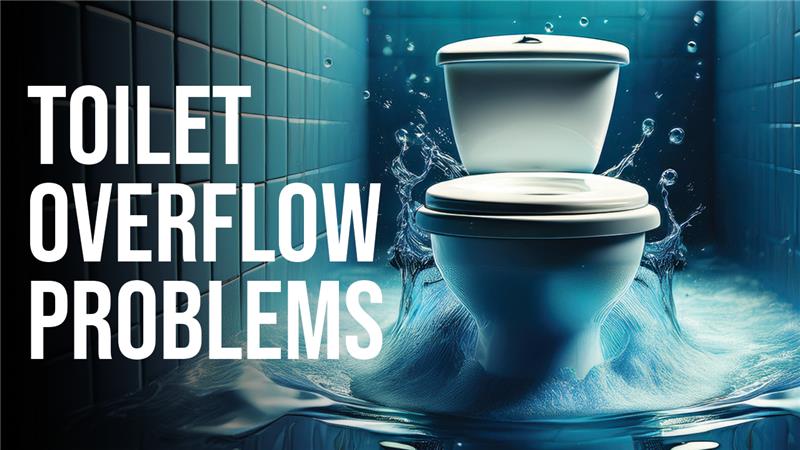Updated January 18, 2024
The cause of an under-slab water leak is usually a pipe beneath the foundation of your home or building that bursts, leaks or corrodes. If left unaddressed, the leaks can cause severe damage. The good news is that you can take the following steps to identify a water leak under your slab before it becomes a costly problem.
1. Inspect the Exterior of Your Home
Inspecting the exterior of your home serves as the first line of defense in detecting an under-slab water leak. Begin with a careful observation of the ground surrounding the structure. Look for unusually damp areas, greener or more lush grass patches, standing water, or sinking spots in the yard, particularly near the main water line. These might be indicators of a leak under the slab.
Next, check for cracks on the exterior walls of your home. If a leak is causing the foundation to shift, it may also cause the walls to crack. These cracks often appear near doors and windows or where the walls meet the ceiling.
2. Check Your Flooring
The flooring in your home can provide significant clues about an under-slab water leak. Early detection often starts by observing any changes in the condition of your floors. Look for damp spots, unusual stains, or discoloration, indicating water seeping beneath the slab.
The type of flooring can also impact how signs of a leak may present themselves. For instance, carpets may feel damp or have a musty smell, hardwood floors might warp or buckle, and tiles may crack due to changes in pressure from below.
3. Listen for Unusual Sound or Noises
In the quiet of your home, particularly at night, your auditory senses can be crucial in detecting an under-slab water leak. The resonating sound of water flowing where it shouldn’t be is often the only visible sign of a hidden leak.
You’re looking for a continuous, low hissing or whooshing sound, indicating water escaping from a pipe under pressure. To listen to these sounds, turn off all appliances, electronics, and anything else that might create background noise.
4. Check Your Pipes
A thorough inspection of your plumbing system is an integral step in identifying an under-slab water leak. Start by visually checking the exposed pipes in your home, such as those under sinks or leading to appliances. Keep an eye out for signs of corrosion, moisture, or leaks. These indicators could suggest an issue with your pipes, potentially pointing toward an under-slab leak.
5. Test Your Water Meter
Observing your water meter is an effective method for detecting under-slab water leaks. The water meter, typically located near the road or sidewalk in front of your property, measures the water entering your home. Even when no one uses water, if the meter reading continues to increase, that’s a sure sign of a leak somewhere on your property.
Turn off all water outlets and appliances before starting the test. Take an initial reading of your water meter, noting the number displayed. Once done, don’t use any water for at least two hours. After this period, reread the meter.
Suppose the reading has changed and increased without water use. In that case, it indicates a potential leak in your plumbing system. The meter reading can only improve if water runs somewhere in your home, which shouldn’t happen if no water is running. While this won’t tell you the leak’s exact location, it can help validate your suspicion about an under-slab water leak.
6. Monitor Your Water Bill
An unexpected increase in your water bill often serves as a clear indicator of an under-slab water leak. In an average household, water consumption should remain consistent.
To analyze your water bill effectively, understand your typical water usage. Compare your current water bill with previous months and look for unusual increases. It’s helpful to consider seasonal variations, as water usage might increase in hotter months due to activities like lawn watering or filling a swimming pool.
Next, consider any changes in your household that might explain the increased water usage, like additional occupants or new appliances. Also, look at the ‘continuous flow’ indicator on your water meter. If all water outlets and appliances are off and the indicator is still moving, water is likely escaping somewhere within your system. If you can’t attribute the increase in water bills to any reasonable cause, this indicates a leak.
7. Check for Changes in Water Pressure
Changes in water pressure can be a significant symptom of an under-slab water leak. Your home usually maintains a regular water pressure that ensures consistency in water flow through your faucets, showerheads, and other water outlets. Any deviation from this normal pressure may indicate a leak.
Diversion of the water intended for your faucets or appliances due to the leak causes decreased water pressure. Less water will flow through your pipes, causing a noticeable drop in water pressure when you use your faucets or shower.
Inconsistent water pressure can also be a telltale sign. If the pressure fluctuates, going from strong to weak and back again, it might indicate that water is escaping from the water pipe at some points and not at others, causing the pressure in the system to vary.
8. Check for Mold
Mold growth is another common sign of an under-slab water leak. Mold thrives in damp, humid conditions, and a water leak beneath your slab can create the perfect environment.
Under-slab water leaks mainly affect areas closest to ground level; start by inspecting areas of your home. Look for visible signs of mold, which can appear in various colors – including black, white, green, or orange – and may have a velvety, fuzzy, or slimy texture. Not all molds are visible, so even if you don’t see any, it doesn’t mean they aren’t present.
A musty, damp smell is often associated with mold growth. If you notice such a smell, particularly in some regions of your home, it could signal that an under-slab leak is causing mold growth.
9. Hire a Professional
The best way to detect an under-slab water leak is to hire a professional plumber with the right experience and tools to inspect your foundation for any signs of leakage. A professional can use specialized equipment such as video cameras, infrared detectors, and acoustic leak detectors to accurately pinpoint any leaks in the pipe system.
Contact us
If you suspect that you have an under-slab water leak, then don’t hesitate to contact us. Our experienced team of professional plumbers at Golden Rule serving the Metro area can provide a thorough inspection and assessment of your plumbing system to identify the source of any leakage. We use only the most advanced technologies and techniques to detect and repair plumbing issues. We also offer heating, air conditioning, electrical, and humidifier services.
Contact Golden Rule for more information today.
Contact Us Today for Plumbing Service!
If you found this post helpful, check out some other budget-saving tips:


Water emergencies can strike when you least expect them. Whether it’s a burst pipe, an overflowing toilet, or a persistent leak, quick action can prevent costly damage.... Read More

Few things are as frustrating (and messy) as a toilet that overflows. Whether it happens at the worst possible moment or simply leaves you scratching your head... Read More

The holidays are a magical time of year—gathering with loved ones, sharing meals, and creating lasting memories. But one unexpected mishap can turn your festive celebration into... Read More